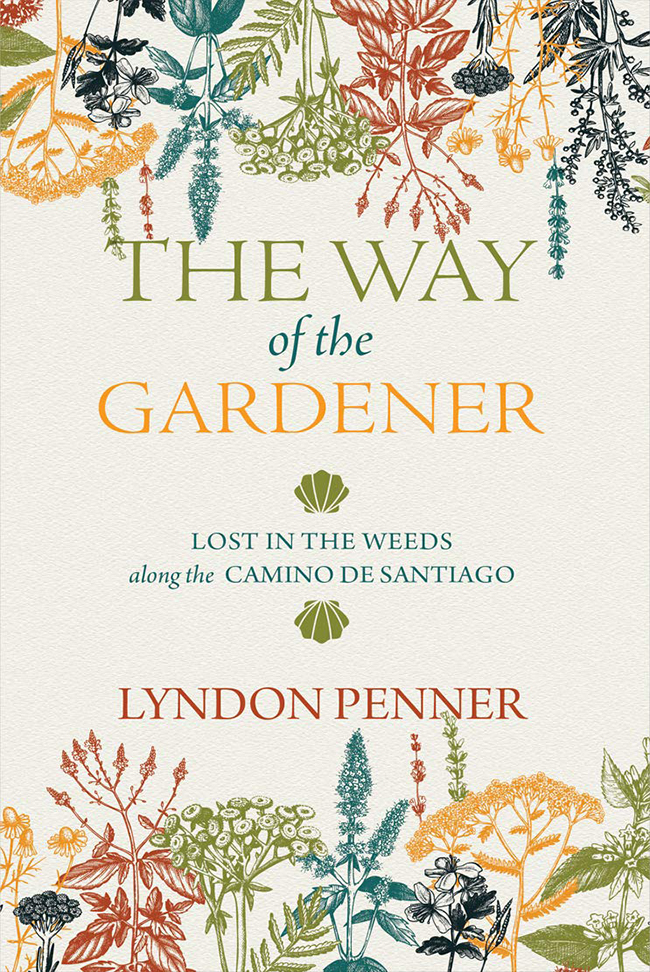From Saskatchewan to a trip to northern Spain. In his new book, The Way of the Gardener: Lost in the Weeds Along the Camino de Santiago, Lyndon Penner, the Saskatchewan-raised author, gardening expert, radio host and environmentalist, takes a pilgrimage that sows the seeds of appreciation for the spiritual and the natural world.
It wasn’t a hike or a religious experience that motivated Penner to take on part of the 800-kilometre long Camino de Santiago (The Way of Saint James) trail across northern Spain. “It started with a beautiful piece of music,” the 40-year-old writes. His good friend Carol, in her 60s, had travelled the route years before and introduced him to the composer Oliver Schroer’s Camino album.
When Carol invited him to join her in her revisiting the trek in the autumn of 2017, Penner accepted without a thought. She reminded him that there would be days they’d walk as many as 30 kilometres. The 700-plus–kilometre route they chose, via the French Way, took them from the edge of France through northern Spain to the town of Santiago de Compostela, said to be the final resting place of the country’s patron, Saint James.
In the following excerpt, we pick up with Lyndon and Carol on the trail, seven days into their six-week journey, between Obanos and Estella in Spain.

Olive trees (Olea europaea) have been grown for thousands of years and are beautiful and extraordinarily long-lived. If there was anything that moved me on this journey, if there was anything deeply mystical and transcendent, more so than any church or cathedral, it was the olive groves. They have the most wonderful gnarled greyish trunks and grey-green foliage that from a distance seems to shimmer. All across Spain, companies of olive trees swayed and glittered in the sun, offering beauty and shade along the path. Some of them were already hung with fruit with the harvest a few weeks off. “I am not in Kansas anymore,” I said to myself as I made my way across the country.
I had seen olive groves before, in California, but for me, the olive groves of Spain are something quite different. The way they caught the light was different. The way the leaves rustled in the breeze and the trees hunched over themselves, solid and stocky and confident, was different. Like wine, olives are an acquired taste. I didn’t like them when I was growing up, and it was only as an adult that I changed my mind about them. Now, getting to know the olive groves of northern Spain was a lot like getting to know the sibling or cousin of someone who is already a good friend. The olive family (Oleaceae) is full of trees and shrubs that I already had affection for. I couldn’t live in a world without lilacs. I am fond of the ash. I love jasmine and forsythia. All these are the olive’s close relatives, but olives do not grow in my climate. I did not expect on my journey that the fruit of these trees would nourish my body while the trees themselves would nourish my soul.
My fascination with olives started with a tree in our yard, a tree that most prairie people will know as Russian olive. It’s a gorgeous tree, but not a member of the olive family at all. It is closely related to some of our own prairie natives such as the buffaloberry and the wolf willow (a shrub whose scent makes many a prairie eye misty and hearts nostalgic), as well as the rugged and stunningly beautiful sea buckthorn. As a teenager, I wanted to find out the difference between the Russian olive in our yard and the olives I saw in the grocery store. I learned that the true olive (Olea europaea) is close kin to the lilacs. It is native throughout the Mediterranean and the southern parts of Asia as far east as China. It can also be found in the Canary Islands. While it is now cultivated in many parts of the world, the modern olive has never done better than it has in its native lands, which include Spain. The oil has always been more important than the fruit, but olives provide shade in hot climates, and they offer, more than any other tree I saw on the journey, beauty.
Olives are medium to large trees with elegant leaves that are dark green above and silvery green beneath and orient themselves to face the sun. From a distance, an olive grove can appear to be almost a shade of sage grey or, if it is overcast, as green as any piece of carved jade. Olive trunks are often gnarled and twisted into spectacular shapes. They are an extraordinarily long-lived tree, and many scholars believe that the Garden of Gethsemane, where Jesus prayed on his last night, was not a garden as we understand it but an olive grove. Despite not being religious, I feel I could pray in an olive grove. There is a holiness to olives that can be felt but not easily explained.
Excerpt of The Way of the Gardener Copyright © 2021 Lyndon Penner excerpted with permission of University of Regina Press.
